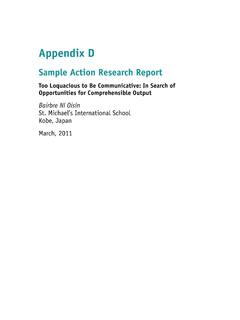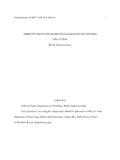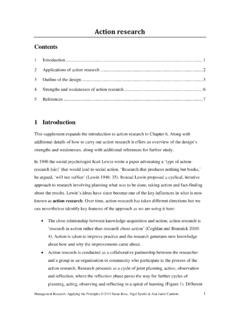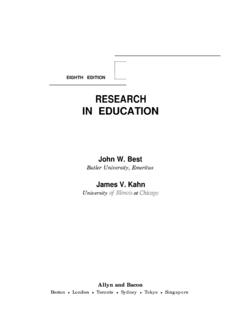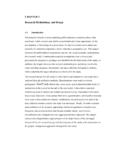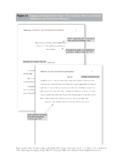Transcription of How to Write an Effective Discussion
1 How to Write an Effective Discussion Dean R Hess PhD RRT FAARC. Introduction Elements to Include in the Discussion State the Major Findings of the Study Explain the Meaning of the Findings and Why the Findings Are Important Relate the Findings to Those of Similar Studies Consider Alternative Explanations of the Findings State the Clinical Relevance of the Findings Acknowledge the Study's Limitations Make Suggestions for Further research Give the Take-Home Message in the Form of a Conclusion Things to Avoid When Writing the Discussion Overinterpretation of the Results Unwarranted Speculation Inflating the Importance of the Findings
2 Tangential Issues The Bully Pulpit . Conclusions That Are Not Supported by the Data Summary Explaining the meaning of the results to the reader is the purpose of the Discussion section of a research paper. There are elements of the Discussion that should be included and other things that should be avoided. Always Write the Discussion for the reader; remember that the focus should be to help the reader understand the study and that the highlight should be on the study data. Key words: publishing;. writing; manuscripts, medical; communication. [Respir Care 2004;49(10):1238 1241.]
3 2004 Daedalus Enterprises]. Introduction ducted the statistical analysis and grouped the summary results into table and graphs. But what does it mean? Ex- You have carefully written the hypothesis. You have plaining the meaning of the results to the reader is the designed the study and collected the data. You have con- purpose of the Discussion section. Although the Discussion comes at the end of the paper, you should be thinking about what you will Write in the Discussion section from the moment that the study is conceived. Questions that you Dean R Hess PhD RRT FAARC is affiliated with the Department of Respiratory Care, Massachusetts General Hospital, and Harvard Medical will develop in the Discussion should be considered from School, Boston, Massachusetts.
4 Dean R Hess PhD RRT FAARC presented a version of this article at the RESPIRATORY CARE Journal symposium, Anatomy of a research Paper: Correspondence: Dean R Hess PhD RRT FAARC, Respiratory Care, Science Writing 101, at the 48th International Respiratory Congress, Ellison 401, Massachusetts General Hospital, 55 Fruit Street, Boston MA. held October 5 8, 2002, in Tampa, Florida. 02114. E-mail: 1238 RESPIRATORY CARE OCTOBER 2004 VOL 49 NO 10. HOW TO Write AN Effective Discussion . Table 1. Elements to Include in the Discussion Explain the Meaning of the Findings and Why the Findings Are Important State the study's major findings Explain the meaning and importance of the findings Relate the findings to those of similar studies No one has thought as long and as hard about your study Consider alternative explanations of the findings as you have.
5 As the person who conceived, designed, and State the clinical relevance of the findings conducted the study, the meaning of the results and their Acknowledge the study's limitations importance seem obvious to you. However, they might not Make suggestions for further research be so clear for the person reading your paper for the first time. One of the purposes of the Discussion is to explain the meaning of the findings and why they are important, Table 2. Things to Avoid in the Discussion without appearing arrogant, condescending, or patroniz- ing. After reading the Discussion section, you want the Overpresentation of the results reader to think, That makes perfect sense.
6 Why hadn't I. Unwarranted speculation thought of that? Even if your study findings are provoc- Inflation of the importance of the findings Tangential issues ative, you do not want to force the reader to go through the The bully pulpit paper multiple times to figure out what it means; most Conclusions that are not supported by the data readers will not go to that effort and your findings will be Inclusion of the take-home message ; save this for the conclusions overlooked, disregarded, and forgotten. section Relate the Findings to Those of Similar Studies the study's outset. Why is the study important?
7 How does No study is so novel and with such a restricted focus this study relate to previous studies? What are the limita- that it has no relation to other previously published papers. tions of the study design? There are elements of the dis- The Discussion section should relate your study findings to cussion that should be included and other things that should those of other studies. Questions raised by previous studies be avoided (Tables 1 and 2). Most important, always Write may have served as the motivation for your study. The the Discussion for the reader; the Discussion is not a forum findings of other studies may support your findings, which for you to impress others with your knowledge of the strengthens the importance of your study results.
8 Stoller et subject. You should be trying to convince the reader of the al3 discussed their study results in the context of a previous merits of the study results. study by others: Our finding that changing in-line suction catheters less frequently is associated with lower cost and no higher incidence of VAP replicates the findings of a Elements to Include in the Discussion randomized controlled trial conducted by Kollef et al, upon which our amended policy was based. It is also important State the Major Findings of the Study to point out how your study differs from other similar studies.
9 An example can again be drawn from Stoller et The Discussion should begin with a statement of the al:3 Certainly, differences in the specific criteria used to major findings of the study. This should be the very first define VAP could contribute to the rate differences be- paragraph in the Discussion . It should be a direct, declar- tween the present study and that of Kollef et al. For ex- ative, and succinct proclamation of the study results. How- ample, comparison of the criteria for nosocomial pneumo- ever, it should not include data or reference to the study nia in our study with the criteria used by Kollef et al shows design.
10 Several examples illustrate the point. In a paper by similar component features but different rating schemes to Anton et al1 the Discussion begins with the sentence, Our establish the diagnosis.. results confirm that these nasal and full-face masks are similarly efficient over 15 min of NPPV with COPD pa- Consider Alternative Explanations of the Findings tients recovering from acute hypercapnic respiratory fail- ure. This clearly states the most important finding of that Despite efforts to remain objective and to maintain equi- study. Fluck et al2 began the Discussion section of their poise, it is easy to consider only those explanations that fit paper with the sentence, Our findings suggest that ambi- your bias.


